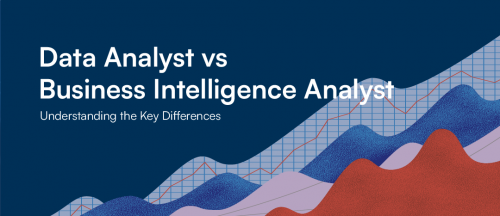

What are the most in-demand data jobs?

According to the World Economic Forum, the amount of data generated each day is expected to reach 463 exabytes globally by 2025. That is a billion gigabytes! To take advantage of information contained is those data, companies need more and more data experts. In this article, we will introduce you to the most-in demand roles in data analytics and data science with a review of three major roles: Data Engineer, Data Analyst and Data Scientist.
1. Data Engineer
They play a crucial role because they support data analysts and data scientists with raw data they need to work. Data engineers are responsible for providing data in a usable form for analytics across the organization. They create a data pipeline, which is a set of technologies that form a specific environment where data is obtained, stored, processed and queried.
Roles:
- Create, monitor and maintain data pipelines
- Design, build and launch highly efficient and reliable data pipelines
- Design data lake storage and access patterns to match customer requirements and conform to naming standards
- Leverage data and business principles to solve large-scale web, mobile and data infrastructure problems
- Collaborate with leadership, engineers, program managers and data scientist to understand data needs.
- Ensure data privacy Concerns are respected
Skills:
- SQL
- Programming skills : Java, Scala, Python
- Distributed computing : Hadoop, Hive, Spark
- ETL and ELT tools
- Databases : SQL and NoSQL
- Data modeling
- Cloud platforms
- Data Quality and validation
- Designing and implementing pipelines
2. Data Analyst
They allow businesses to maximize the value of their data assets and use analytics to drive strategic business decisions. Their primary responsibility is to discover how to use data to answer questions and solve problems. They work with data engineers to access data sources and with stakeholders to create relevant and meaningful reports. Once they discover the hidden patterns in data, they will utilize reporting tools and storytelling skills to turn numbers into tangible insights.
Roles:
- Effectively communicate with stakeholders to understand data and business requirements
- Define KPI and metrics
- Query databases to collect data
- Data mining from primary and secondary sources
- Cleaning data
- Interpret data and identify trends patterns with statistical techniques
- Prepare reports and dashboards to share with stakeholders
Skills:
- Business acumen
- Knowledge of statistical methods and data analysis techniques
- Strong verbal and written skills
- SQL
- Excel
- Data visualisation software (BI tools) : Tableau, PowerBI, Qlick View or Looker
- Programming languages : Python or R
- Cloud Technology
3. Data scientist
Their primary responsibility is to extract value from data using statistical techniques and machine learning. They combine statistics, programming, data modeling and business acumen to discover solutions to business questions. Aside from cleaning and wrangling data, they spend most of their time asking questions, running experiments to answer those questions, working with stakeholders, and communicating their findings with the help of data analysts. An example of data scientist job is machine learning to increase and optimize customer experience, implementing AB testing on new features, ad targeting, etc.
Roles:
- Work with stakeholders to identify opportunities for leveraging company data to drive business solutions.
- Develop time series, forecasting, anomaly detection and models
- Extract Meaningful Features from Data
- Create Machine Learning Experiments
- Evaluate Machine Learning Experiments
- Create Machine Learning Pipelines
- Monitor Deployed Models
Skills:
- SQL
- Programming : R or Python
- Statistical and data mining techniques
- Distributed Computing tools : MapReduce, Hadoop, Hive, Spark
- Time series and Forecasting
- Causal inference
- AB testing
- Machine Learning
- Deep Learning
To wrap up, here are the most known data roles and their responsibilities:
- Data Engineer : Gather, organize and maintain data for the company with databases and data pipelines.
- Data Analyst : Query databases in order to analyze data by identifying trends and patterns. They define metrics and communicate them effectively with dashboards.
- Data Scientist : Take raw data, cleaning it (handling invalid values and ensuring it is in a state where it can be analyzed), performing some basic analysis on it, then taking that data and creating machine learning models. These models are then evaluated, refined, and deployed through machine learning pipelines where they are monitored on an ongoing basis for data drift, accuracy, and bias.
If you need help in taking advantage of all data generated by your companies, don’t hesitate to contact HeadMind Partners who have experts in each role mentioned in this article. We will support you in the best ways!
- https://medium.com/accessibleai/roles-in-data-science-3adbc63f93ec
- https://medium.com/@melodyucros/interested-in-data-science-heres-a-list-of-of-10-specializations-to-choose-from-cd342c53b673
- https://medium.com/bitgrit-data-science-publication/5-roles-in-data-in-2021-7d9bc0a3083e
- https://www.simplilearn.com/data-scientist-job-description-article






